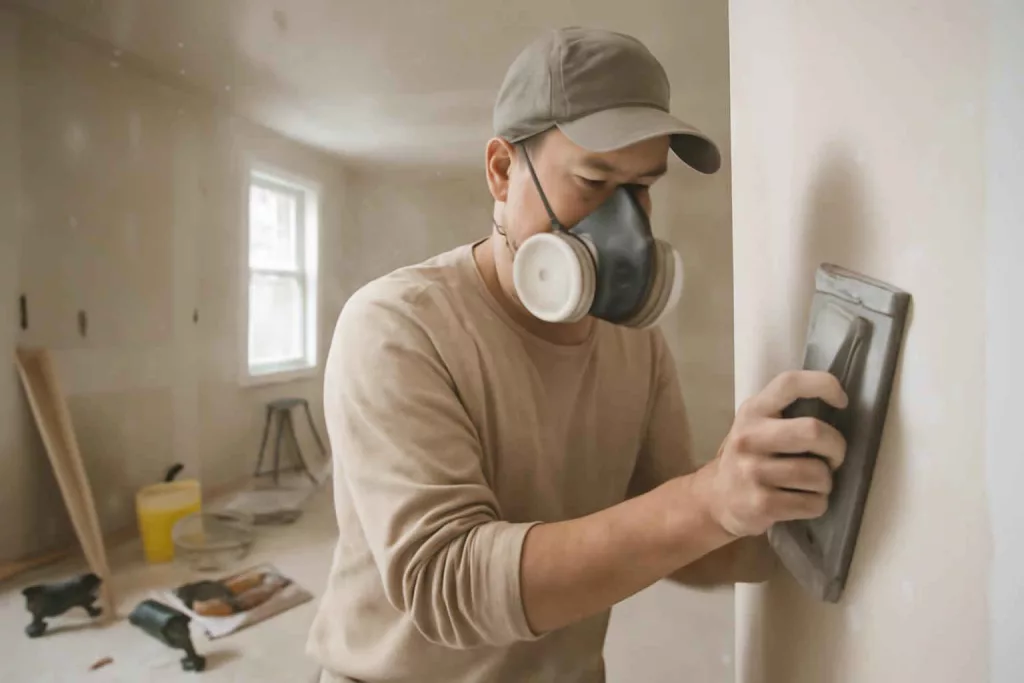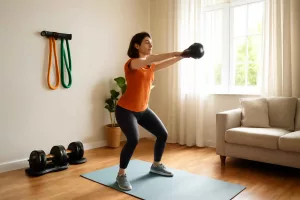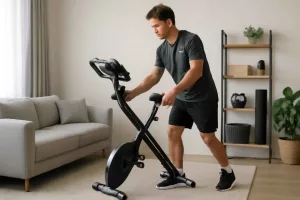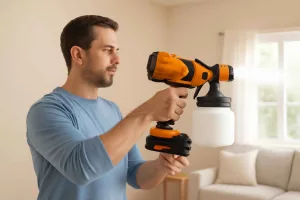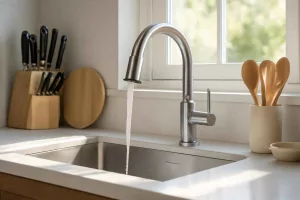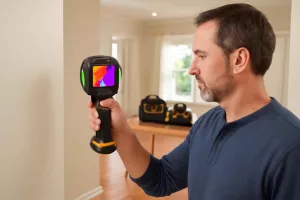Whether you’re sanding drywall, cutting tile, or demolishing walls, airborne dust poses serious health risks. Investing in the best dust respirators for home renovation ensures you can breathe easy while tackling your next project. In this guide, we cover everything from filtration ratings to fit tests and maintenance to help you choose the right protection.
Why Use a Dust Respirator for Home Renovation
Health Risks of Inhaling Construction Dust
Construction dust contains a mixture of wood particles, concrete silica, drywall fragments, and other fine materials. Prolonged inhalation can lead to irritation, chronic bronchitis, and even long-term illnesses like silicosis. Even short-term exposure can cause coughing, itching eyes, and nasal congestion. A high-quality dust respirator is your first line of defense against these hazards.
Types of Dust You Encounter in Home Projects
Different renovation tasks generate different dust types:
- Drywall dust: Extremely fine, clogs airways easily.
- Wood dust: Can be allergenic and carcinogenic.
- Ceramic and tile dust: Contains silica, harmful when inhaled.
- Concrete and masonry dust: High in silica content, requires P100-grade filtration.
Matching your respirator’s filtration rating to the dust type is essential for effective protection.
Key Features to Look for in a Dust Respirator
Filtration Ratings (N95, P100, etc.)
Respirators are rated by efficiency. Common ratings include:
- N95: Filters 95% of non-oil particles—suitable for most dusts (drywall, wood).
- P100: Filters 99.97% of particles including oil-based particulates—recommended for silica and concrete dust.
For heavy masonry work, choose a P100 rating to ensure maximum protection against silica.
Facepiece Design (Half Mask vs. Full Mask)
Half-mask respirators cover nose and mouth, offering lightweight comfort. Full-face masks add eye protection and a larger seal area but can be bulkier. For most home renovation tasks, a half-mask respirator balances protection and mobility.
Comfort and Fit
A secure seal is only effective if the mask is comfortable enough for extended wear. Look for adjustable head straps, cushioned nose bridges, and lightweight materials for all-day projects.
Valve and Exhalation Features
Exhalation valves reduce heat and moisture build-up inside the mask, making breathing easier during strenuous tasks. Models with dual valves often provide better airflow balance.
Maintenance and Durability
Reusable respirators require regular filter changes and cleaning. Check manufacturer guidelines for replacement frequency and cleaning protocols. Disposable masks are low-maintenance but less eco-friendly and cost-effective over time.
Top 5 Dust Respirators for Home Renovation
3M 8511 N95 Particulate Respirator
Overview: Lightweight disposable respirator with a Cool Flow valve to reduce heat build-up. Rating: N95.
Pros: Comfortable fit, good affordability, widely available.
Cons: Not rated for oil-based particles or silica dust.
Best for: Woodworking and general drywall work.
3M 6200 Half Facepiece Reusable Respirator + P100 Filters
Overview: Durable reusable mask with replaceable P100 filters. Rating: P100.
Pros: High filtration efficiency, adjustable straps, easy filter replacement.
Cons: Higher upfront cost, must maintain filters.
Best for: Concrete cutting, masonry, and silica-heavy tasks.
Honeywell North 7700 Series Half Mask + P100 Cartridges
Overview: Comfortable silicone facepiece with dual P100 cartridges for maximum protection.
Pros: Soft seal, low breathing resistance, durable construction.
Cons: Bulkier than single-cartridge models.
Best for: Extended renovation sessions involving mixed dusts.
GVS SPR457 Elipse P100 Filter Half Mask
Overview: Slim, low-profile design with integrated P100 filters. Rating: P100.
Pros: Lightweight, compact, easy to store.
Cons: Fixed filtration; replace entire mask when filters degrade.
Best for: Mobile DIY enthusiasts with limited storage space.
3M 7502 Half Facepiece Reusable Respirator + N95 Filters
Overview: Flexible elastomeric design with replaceable N95 filters. Rating: N95.
Pros: Affordable reusable option, good sealing, lightweight.
Cons: Not P100 rated; avoid silica dust.
Best for: Drywall sanding and light renovation tasks.
How to Properly Fit and Seal Your Dust Respirator
Fit Testing Methods
To ensure maximum protection, perform a user seal check each time you wear your respirator. Two common methods include:
- Positive Pressure Check: Cover exhalation valve and gently exhale—mask should bulge slightly without air leaks.
- Negative Pressure Check: Cover filter inlets and inhale—mask should collapse slightly against your face.
Sealing Checks
Inspect the mask’s seal area around nose bridge and cheeks. Facial hair, glasses, and jewelry can break the seal. For best results, shave or trim facial hair in sealing zones.
Fit for Different Face Shapes
Some brands offer small, medium, and large sizes. Try different models to find the best fit. If you’re uncertain which size to choose, look for adjustable straps and multiple seal rings on the mask.
Respirator Maintenance and Cleaning
Reusable vs Disposable Mask Care
Disposable masks require no cleaning but must be discarded after heavy exposure or when breathing becomes difficult. Reusable respirators should be cleaned after each use with mild soap and warm water. Rinse thoroughly and air dry away from direct sunlight.
Filter Replacement Guidelines
Replace P100 and N95 filters according to the manufacturer’s recommendations or when you notice increased breathing resistance. Keep spare filters on hand, especially for multi-day projects.
Additional Safety Gear for Dusty Renovation Projects
Eye Protection
Combine your dust respirator with ANSI-rated safety goggles to guard against flying particles. If you’re using power sanding tools, a full-face shield adds extra protection.
Hearing Protection
Noisy tools can damage hearing over time. Choose earmuffs or earplugs rated for workshop noise levels.
Dust Extraction Tools
To minimize airborne dust, use shop vacuums and dust extractors. Check out our guide on dust extraction solutions and pair them with cordless drywall sanders for a cleaner worksite.
Frequently Asked Questions about Dust Respirators
Can I reuse an N95 disposable mask?
While N95 disposables are intended for single use, limited reuse is possible if masks remain clean and undamaged. Rotate masks and store in a breathable container between uses.
Should I choose a P100 over an N95?
Yes, if your project involves silica or high concentrations of fine dust—P100 filters nearly all particles, offering superior protection.
How do I know when to replace my filters?
Replace filters when breathing resistance increases significantly or when respirator guidance indicates filter life has ended.
Is a full-face respirator better?
Full-face masks provide additional eye protection but can be heavier and more expensive. Half masks are sufficient if you also wear safety glasses.
Conclusion
Choosing the right best dust respirators for home renovation is crucial for protecting your health during any remodeling project. From disposable N95 masks to reusable P100 systems, each option offers unique benefits. Evaluate dust types, comfort, and maintenance requirements before investing. And remember, pairing your respirator with proper dust extraction tools and protective eyewear will ensure a safer, cleaner worksite. Ready to shop? Start with your favorite model on Amazon to secure top-rated protection before your next renovation.
